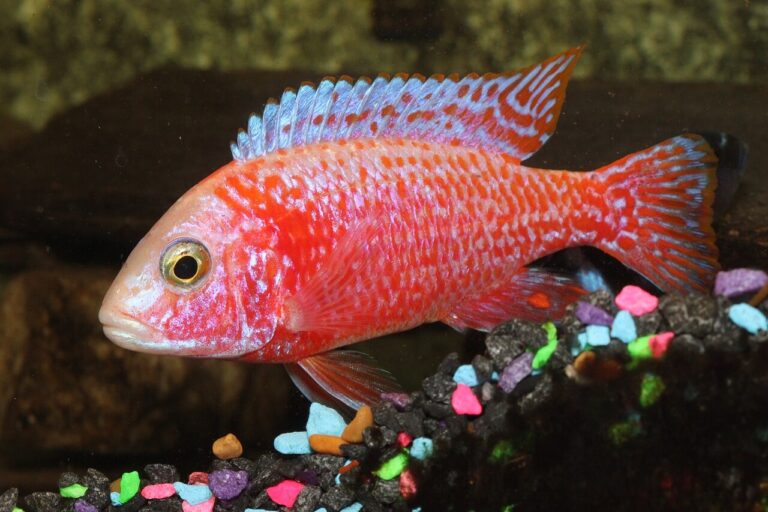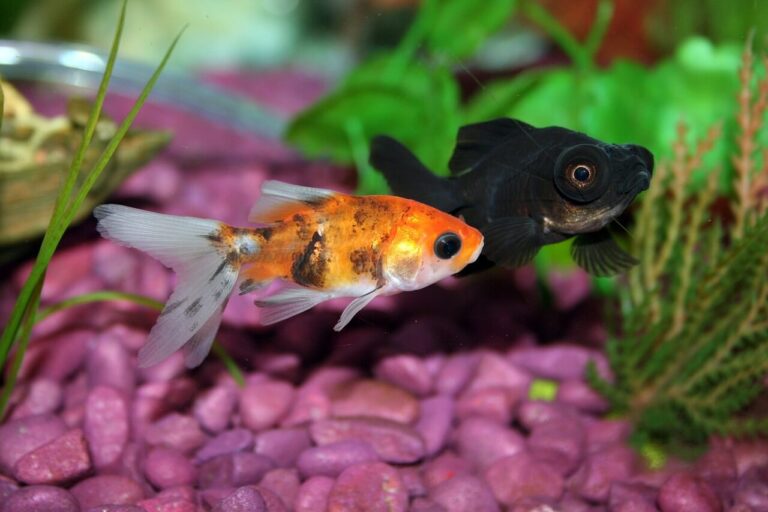The beginners guide to choosing a aquarium shape and size
Home aquariums done right are a sight to behold, the crystal clear water, the fish swimming from end to end in their natural habitat is one of those center pieces that everyone cannot help but look at. But, when the tank is dirty or too small and the fish will not swim around the tank can be an eyesore. In this guide on choosing the correct aquarium size and shape, I will show you how to determine what aquarium is going to work the best for you in the long term.
What to consider when choosing your aquarium size and shape
As a fish keeper, you want to make sure that your aquarium is a comfortable and healthy environment for your precious aquatic friends. The shape of the aquarium – which determine factors such as water circulation patterns, surface area and overall size – can play an important role in the health and happiness of your fish. When selecting the ideal tank shape, there are many things to consider: practical matters like lighting needs or space constraints; aesthetic concerns like what will look nice when displayed in its intended location; even personal preferences you might have. We’ve compiled 10 pro tips to help fish keepers weigh their options and pick out the perfect aquarium for their home!
1. Determine the type of fish you want to keep
When it comes to selecting the type of fish you want to keep in your tank, there’s a lot to consider. You need to do some research into the size, behavior and water requirements for different types of fish before making your decision. Different species may be better suited for particular aquarium sizes and environments. For example, smaller tanks might not be appropriate for large-growing fish such as Oscars or Angel fish, while tropical species often require higher temperatures. By familiarizing yourself with the natural habitat and size of each species that you are considering keeping, you will be better equipped to make the most suitable choice for your tank environment. It is always best to err on the side of caution when selecting fish as they can outgrow their environment if not given enough space or supplied with the right type of water conditions.
When considering which aquarium is right for you, it’s important to remember that the size of an aquarium matters. Bigger tanks provide greater volumes of water and allow more fish to be housed within them. This is especially true when keeping species of fish that prefer swimming in groups or schools. Solitary specimens may become timid if placed into a home aquarium, but when multiple fish of the same species are placed together they become more active and comfortable. Therefore, it is best to look for an aquarium that can accommodate a larger group of fish in order to ensure their well-being. An added benefit is that this will also create a better home aquarium environment overall.
2. How many fish do you want in your aquarium
When it comes to fish, the major factor when choosing a tank size is understanding how many you plan on having. One gallon of water per inch of fish is the general rule of thumb suggested by professionals, depending on the species. While this may seem like a lot of water at first, consider that not only will each fish need space to move and grow, but you’ll also need room to include enough filtration, rocks & decorations for them. It’s also important to remember that if the tank is overstocked with too many fish then your water parameters won’t be stable and could cause harm or death to your fish.
3. Consider the shape of the tank
Choosing the right tank size and shape can be a crucial factor in providing the best environment possible for fish or other aquatic life. For swimmers who frequent one area, such as the bottom of the tank, wide and shallow tanks are ideal since they provide more floor space. On the other hand, if your fish tend to swim vertically in the tank, tall and narrow tanks provide more water volume in which they can move upwards. In addition, different types of equipment such as filtration systems and artificial lighting will also have to be taken into consideration when selecting a tank size and shape that is most suitable for your aquarium.
4. Consider the tank location in your home
Choosing the right tank location is very important in order to ensure proper maintenance of your tank. Keep in mind that the tank should fit into the space you’re providing for it and also be easily accessible. An ideal place would provide enough room for any water treatments, plumbing, or electrical line hook-ups you may need to do. Choosing a spot close to an outlet or water supply might make these jobs easier. Also, a tank located within arm’s reach is more conducive for simple maintenance tasks and regular inspections than one tucked away in a tight corner. These little details will help you keep your tank running optimally for many years to come!
Tips for choosing a good location in your home
- Avoid placing near a window with direct sunlight: Sunlight will create excessive algae growth and may also warm up the aquarium causing fluctuations in the temperature.
- Place your tank near an electrical outlet: Your tank is going to need multiple electrical components to run like a heater, air pump, and filter to name just a few. Having your tank near an outlet where you do not have to run an extension cord will make it easier for the setup of your tank.
- Avoid heaters in your room: A tank that is near a heater or air conditioner may experience too big of fluctuations in the temperature of the water.
- Consider where you will get your water from for water changes: Every tank is going to require that you change out and add water at some time.
5. What equipment will be required
When planning a fish tank setup, it is important to think about the equipment you will need. Filters, heaters and lighting are essential components for a healthy environment and should be considered when assessing the tank’s size. Be aware that the more equipment you include in your set up, the less room there is going to be inside the tank for swimming space and decorations. Make sure to buy an aquarium of adequate size so that all your necessary equipment fits comfortably without crowding the fish or making their home look unsightly.
6. Consider what your future plans are for you home tank
Having a fish tank can be an incredibly rewarding experience, but it’s important to plan ahead if you plan on having more than one type of aquatic animal in your tank. When you’re deciding on the size and type of your tank, figure out whether you plan on adding any other animals, like hermit crabs or corals, in the future. Having those plans in mind will help ensure that the environment you create is suitable for the inhabitants in it now and in the years ahead. Additionally, consider the growth rate of species when planning so that they have enough room to grow. As long as you plan carefully and consider all requirements, adding new critters can be a wonderful addition to your aquarium!
7. Take into account the maintenance requirements
Taking on the responsibility of caring for a larger aquarium tank shouldn’t be taken lightly. It requires more thought, time, and maintenance than smaller tanks. The larger the tank, water changes and cleaning need to be done in order to maintain a healthy environment. In order to prevent your fish from becoming sick or stressed, it’s important that you ensure whatever tank size you choose is something that can easily fit into your lifestyle. Larger tank sizes may mean more care requirements and therefore households with full time jobs or other commitments may not have enough time to handle all of the necessary duties. Before deciding on a size, consider if you have enough room for a large tank but also if you are prepared for the full scope of what is involved in its upkeep.
8. What is your budget
Make sure that the tank you want is in your budget. Sometimes it is worth going for a little bit smaller tank but better quality that will last for a long time. When shopping for a tank for your fish, taking the time to compare prices is essential in making sure you get the best deal. Larger tanks may require a bigger investment up front, but they tend to be more cost-effective in the long run. Consider that larger tanks allow for greater oxygen levels, can hold more decorations, and most importantly provide your fish with plenty of space to play and thrive.
9. What do you want the walls of the tank made out of
There are two main types of materials for your tank walls the most important thing to remember is that glass is going to be more expensive but will not scratch as easily and will stay cleaner.
10. Get expert advice.
Starting up a home aquarium can be a difficult, as there’s a lot of considerations to make as you set up your new tank. One of the most important decisions you’ll need to make is choosing the right size tank. Though it may seem intimidating, don’t hesitate to reach out and ask for help! Your local pet store or aquarium expert will be more than eager to assist you in finding the perfect size tank for your particular situation. After all, dedicated experts can provide invaluable knowledge and advice with regards to home aquariums, so don’t be afraid to seek out help if you’re feeling overwhelmed.
Tanks size considerations
When deciding on the size of home aquarium, remember that bigger is always better. A larger tank offers more swimming space and creates an environment where fish can thrive together. Keeping schooling species in a home aquarium with adequate space ensures your fish will be properly socialized and happy. This will not only make for a beautiful home aquarium display, but will also guarantee that your fish are receiving the best care possible. So, when selecting an aquarium for your home, be sure to purchase one with a large volume of water order to provide the best home environment for your fish. With the right size home aquarium, you and your fish can enjoy a beautiful, healthy living space together.
What is the best tank size for beginners?
The best tank size for beginners is the largest one that you can afford and fit in your space. I know this sounds counterintuitive but after having lots of fish tanks over the years I can confidently say that the biggest tanks were the easiest to maintain and keep the water quality healthy for the fish.





